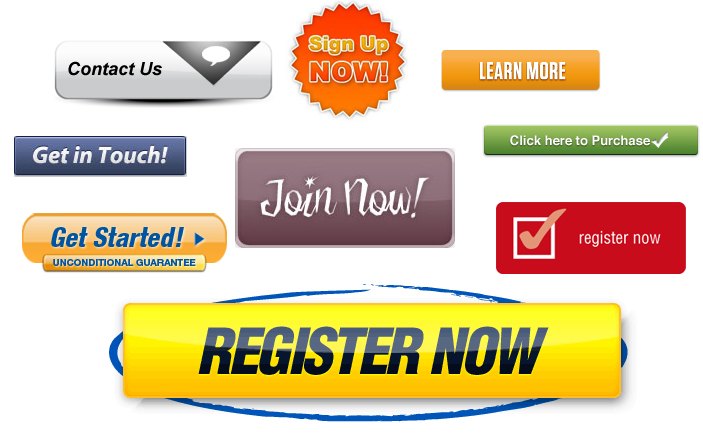If the primary purpose of your company or business’s website is to generate leads (which, in turn, become new clients, customers, or patients), your site’s Call-To-Action is arguably the most important element on any given web page. Effective Calls-To-Action (often called CTAs) maximum conversions – that is, they convert your website’s visitors to customers – by employing a variety of techniques that grab a potential client’s attention and spur them to take a specific action. At Alecan Marketing Solutions, we rely on statistically-proven design elements coupled with marketing psychology to turn casual internet browsers into loyal customers. Read more to learn about some of our most effective methods!
Colors That Pop. In our experience, the most effective way draw a person’s attention to your Call-To-Action – whether it be a button, a hyperlinked text, or a customized shape – is by making it stand out from the rest of the page. To do this, we often choose a color that contrasts with the background and, if possible, also reflects your company’s key branding colors. Marketing psychology also suggests that “warm” colors, such as red and orange, draw more attention and action than “cool” colors, like blue and green. (For example, if your business’s primary colors are blue, green, and orange, we would likely make your Call-To-Action button orange to illicit the greatest possible response.)
Powerful Text. Though graphical elements on your company’s web pages are important, recent studies have shown that visitors perusing a website tend focus more on words in text ads than on their accompanying graphics. Wording that is specific and action-oriented can strengthen your message by conveying additional meaning about exactly what is going to happen once an action is taken: for example, “Click Here To Receive A Free Quote” is more descriptive than simply saying, “Click Here!” Powerful Call-To-Action text is especially important when a specific page’s content isn’t necessarily related to the service you are providing through the Call-To-Action button – in this case, customers need to be reminded of what kind of service, product, form, survey, or study the Call-To-Action button is taking them to.
Shape Things Up. Regardless of industry, Call-To-Action buttons tend to be fairly standardized: most appear on websites as rectangular boxes (usually with the corners rounded to set them apart from banners and ads). Though deviating from this formula can be risky – the reason being that customers today have been conditioned to look for the rectangular box when they want to take action – using an unconventional shape for your website’s Call-To-Action button, such as a star, a waving banner, or a custom image, may draw a potential customer’s attention for its novelty and illustrate your business’s unique perspective and creativity. Studies have shown that arrows, in particular, are mentally associated with activity; this shape can motivate visitors to “follow the directions” and take the next step toward becoming clients.

Positive Space: Human beings are easily distracted, especially when they’re surfing the web. For this reason, we believe that a website’s primary Call-To-Action should always appear in a space away from the “busier” elements on any given webpage; unless the information or images around the Call-Of-Action directly relates to taking action (such as arrows that point toward the button or a beautiful example of the product you are selling), separating the Call-To-Action button from the rest of the page’s content is one of the simplest ways to focus an audience’s attention on what’s important. Also, because people typically read from left to right, a Call-To-Action button on the left side of the page will receive more attention than a button on the right side.
Incentivize: Sometimes potential customers need a little extra push to encourage them to click on your website’s Call-To-Action. Incentives – usually in the form of free gifts, bonus offers, discounts, and coupons – can give visitors the nudge they need to sign up for your services, schedule a consultation, or make a reservation. If your business’s Call-To-Action is relatively simple, then reminding people that taking action will not be a long or burdensome process can act as an incentive, and employing social influence (usually by showing the number of existing customers or subscribers) is a great way to sway people in a specific direction by encouraging them to join a larger, socially-endorsed community.
Other Excellent Call-To-Action Tips:
- If your product is something tangible, try showcasing it right next to your Call-To-Action; this sets up a mental correlation (“If I click here, I get this”) in visitors’ minds and increases the likelihood that their interest will result in action.
- When your website has several Calls-To-Action on one page, identify your Primary Call-To-Action (usually the one directly linkedu to revenue) and draw attention to it over the others. One simple way to accomplish this is by making the Primary Call-To-Action a button and the Secondary Call-To-Action a hyperlink text.
- Including the VeriSign Checkmark next to your Call-To-Action reassures potential clients that their information is safe and your website is secure.



